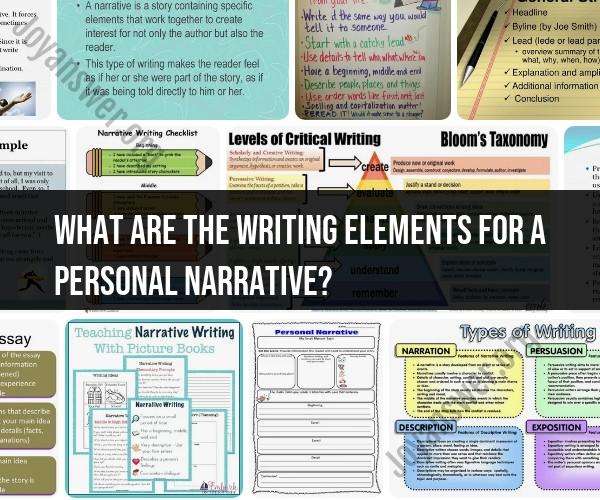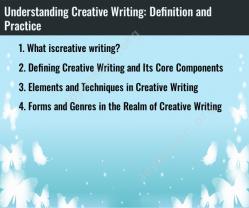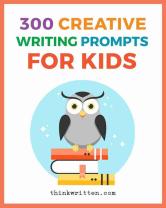What are the writing elements for a personal narrative?
A personal narrative is a type of writing that tells a story from the author's own life, providing insight, reflection, and a sense of personal experience. To create a compelling personal narrative, you should incorporate key writing elements that engage your readers and convey your personal story effectively. Here are the essential elements for a personal narrative:
Point of View:
- Personal narratives are typically written in the first-person point of view (using pronouns like "I" or "we") because they represent the author's personal experiences and emotions. This perspective helps readers connect with the narrator's thoughts and feelings.
Setting:
- Establish the setting or time and place where the events in your narrative occur. Provide enough descriptive details to help readers visualize the surroundings and context.
Characterization:
- In a personal narrative, the central character is usually the author (you). Describe yourself and any other characters involved in the story, including their personalities, appearances, and roles.
Plot:
- Develop a clear and engaging plot that outlines the sequence of events in your story. Personal narratives often follow a chronological order, but you can also use flashbacks or nonlinear structures for added impact.
Conflict or Challenge:
- Introduce the central conflict or challenge that drives the narrative. This could be a problem, obstacle, decision, or personal struggle that you face in the story.
Resolution:
- Describe how the conflict is resolved or the outcome of the events. The resolution provides closure to your narrative and may include lessons learned or personal growth.
Dialogue (If Applicable):
- Include dialogue to make the narrative more engaging and realistic. Use quotation marks to indicate spoken words and attribute them to the appropriate characters.
Tone and Voice:
- Establish the tone and voice that match the mood and emotions of your narrative. Your tone can be reflective, humorous, somber, or any other tone that suits the story's message.
Emotion and Reflection:
- Express your emotions and thoughts throughout the narrative. Personal narratives often include moments of reflection, introspection, or self-discovery that convey the author's feelings and insights.
Sensory Details:
- Engage the reader's senses by including sensory details. Describe what you saw, heard, felt, smelled, and tasted to create a vivid and immersive experience.
Symbolism and Imagery:
- Incorporate symbolism and imagery to enhance the depth and meaning of your narrative. Use metaphors, similes, and symbols to convey abstract ideas or emotions.
Theme:
- Identify the overarching theme or message of your narrative. What is the deeper meaning or lesson you want readers to take away from your story?
Transitions:
- Use transitional words and phrases to smoothly connect ideas and events within your narrative. Transitions help maintain the flow and coherence of the story.
Engaging Opening:
- Start your narrative with a compelling hook or opening sentence that grabs the reader's attention and sets the stage for the story to come.
Concluding Reflection:
- End your narrative with a concluding reflection or insight that ties back to the central theme. This reflection provides closure and leaves a lasting impression on the reader.
Editing and Revision:
- After writing your initial draft, revise and edit your narrative for clarity, coherence, grammar, and punctuation. Ensure that your writing is polished and error-free.
Remember that personal narratives are a form of storytelling, and the goal is to make your experiences relatable and emotionally resonant with your readers. By incorporating these key writing elements, you can craft a compelling and memorable personal narrative.
Essential Writing Elements for Crafting a Personal Narrative
Personal narratives are stories about your own life experiences. They can be about anything from a funny childhood anecdote to a major life event. When writing a personal narrative, it is important to focus on the following essential elements:
- A strong hook: The first sentence or two of your personal narrative should grab the reader's attention and make them want to read more.
- A clear focus: Your personal narrative should have a clear focus or theme. This is the central idea that you want to explore or convey to the reader.
- Vivid language: Use descriptive language to bring your story to life. Help the reader to see, hear, smell, taste, and feel what you experienced.
- Reflection: Take some time to reflect on your experience and what it meant to you. What did you learn? How were you changed?
Components of a Compelling Personal Narrative
A compelling personal narrative will typically include the following components:
- Introduction: The introduction should introduce the reader to the story and its main characters. It should also establish the focus or theme of the story.
- Body: The body of the personal narrative is where you will tell your story. Be sure to include vivid language and sensory details to bring your story to life.
- Conclusion: The conclusion should wrap up the story and leave the reader with something to think about. It can be a reflection on what you learned from the experience, a call to action, or a final thought.
Key Elements that Make a Personal Narrative Engaging
Here are some key elements that can make your personal narrative more engaging:
- Honesty and authenticity: Be honest and authentic in your writing. Share your true thoughts and feelings about the experience.
- Vulnerability: Don't be afraid to be vulnerable in your writing. Sharing your personal stories can help to connect with readers on a deeper level.
- Humor: A little bit of humor can go a long way in a personal narrative. It can help to lighten the mood and make the story more enjoyable to read.
- Conflict: Conflict can be a great way to keep readers engaged. It doesn't have to be anything major. Even a minor conflict can help to create suspense and keep the reader wondering what will happen next.
- Resolution: Provide the reader with a sense of closure at the end of your story. This doesn't mean that you have to tie up every loose end, but you should leave the reader with a sense of understanding or resolution.
By following these tips, you can write a personal narrative that is engaging, compelling, and meaningful.











